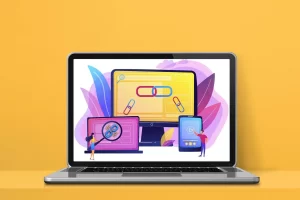If you have a website, do you have a good content marketing strategy in place? One important aspect of your content marketing strategy is SEO. Without SEO, your website will not generate any traffic.
By optimising your website for SEO, you can increase the number of people that find your website through search engines. Your aim is to show up on the very first page of Google. However, this can be a slow climb to the top, but one that is possible, thanks to SEO.
You can contact an SEO agency for Search Engine Optimisation or SEO. You can optimise your content for SEO, so your target audience can find you when they enter a keyword or phrase in Google that relates to what your service or product.
The SEO specialist assigned to your website will combine content marketing with SEO to help you reach your goal to rank higher on Google. They will perform SEO research, review your existing content for SEO, and analyse your website.
Once your SEO specialist has given your website an SEO makeover, you need to ensure you maintain your position on Google and use it as a benchmark to continue improving your presence against your competitors.
Follow these content marketing tips on SEO to ensure you do not slide down in the ranks:
6 Content Marketing Strategies in SEO
You need to develop a content marketing plan that consists of these 6 content marketing strategies:
-
Create Evergreen Content
What type of content do you want to create for your target audience? Identify the type of content related to your industry that your target audience will enjoy reading. Create quality content that continues to add value. Here are some things to consider when creating content that will attract and engage your target audience:
- Unique and original
- Useful
- Relevant content that does not get outdated quickly and is still relatively useful well after a considerable has passed since posting
- Detailed, informative, and thorough
- Searchable – Covers topics users are likely to search for on search engines
Evergreen content ensures that people continue to visit your website every year because the information you presented in blogs remains unchanged even today. Gradually, this will increase your ranking on Google and other search engines. In return, this will generate website traffic.
-
Optimise for Search Engine and Write for Your Target Audience
Optimise your content for search engines and develop content that appeals to your target audience. Users use search engines to find answers to their questions. Google wants to show them accurate results, which is why they continue to change, modify, and tweak their algorithm.
Businesses need to consider Google and their target audience’s requirements before they develop content. Ask yourself: What type of content does your target audience want to read? How can you optimise it for SEO, so it ranks on Google?
-
Combine Content Marketing with SEO and Social Media
Content marketing, SEO, and social media are a powerful combination when used together. Creating content and sharing it on your social media platforms can create more visibility for your business among your target audience.
Whenever you publish content on your website, share it on your social media platforms as well. On your website, provide users with social media sharing icons, so they can share it on their own social media accounts.
-
Relate the Topic to Your Industry or Area of Expertise
Select a topic that is relevant to your industry or your area of expertise. For instance, you are running a makeup blog. You should not publish a post related to the latest smartwatch unless it has an option to suggest new makeup looks. If it does not, it is not relevant to your industry.
Even though doing so will not result in a penalty, it will not give you any benefits either. The best approach to take is to publish content that is relevant to your industry and communicates the goals you have set for your business.
For instance, if you have a makeup line, apart from providing information about your different products, you can also publish video tutorials and write on topics such as “Reasons to Wear Red Lipstick and “Benefits of Using Vegan Makeup Products.”
-
Publish Content Above 1,000 Words
Focus on writing blogs that are 1,000 words or more. Google tends to rank blogs consisting of more than 1,000 words. However, do not fill it with fluff to increase the word count because every sentence needs to add value to the reader.
A long blog post is an informative post, which contains essential information that the reader will find helpful. You can either divide the topic into separate posts, such as “Part 1, “Part 2,” and “Part 3,” or you can just create one long blog post. If you do not have time to write long blog posts, outsource the task to an SEO agency.
-
Publish Content without Fail
Post content consistently for your target audience by creating a pre-defined blog publishing calendar. By publishing content for your target audience regularly, users will make a mental note to visit your website on the following period to check out if you have published new content. You can also give them an option to register their email with you, so you can send an alert each time you publish a blog.
Here is how publishing content regularly can benefit you:
- Gives a reason to search engines to visit your website
- Increases the number of visits you receive from your RSS feed and newsletter
- Increases the number of visits you receive from various social media platforms
- Keeps your target audience happy
Next, you need to familiarise yourself with the different types of content for SEO to create.
7 Types of Quality SEO Content
Select the type of SEO content you want to create, based on how relevant it is to your business. Here is a list of SEO content types you can create:
-
Product Pages
If you sell products, you can optimise the product descriptions for SEO. It can also serve as a Pay-per-click landing page.
-
Blog Posts
Create an engaging blog post to entice users to visit your website to read it. You can optimise the content of the blog for SEO. Blogs are also a great way to increase your website’s authority in your industry.
-
Articles
Produce a news article, feature piece, or interview.
-
Lists
In your blogs, use the list method as we have done here. It increases readability, as users can quickly scan blogs for information.
-
Guides
You can also create a guide-based blog. A guide is longer and more detailed. However, you can divide the guide into parts instead of writing everything in one blog post. Or you can allow users to view the guide in a single page if they want to.
Post the complete guide on your website or post a summary or an excerpt and request users to register with their email to read the entire guide. Making people register to read the complete guide has its advantages and disadvantages. Even though it will generate leads, it will likely decrease the number of users that visit your website.
-
Videos
One of the reasons adding a video to a blog or having a standalone video on your website aids your SEO efforts is because it is easier to rank your website for a competitive keyword on Google with a video. Depending on the nature of your business and the products or services you provide, you can create the following types of videos.
- Culture — employee interviews, games at the office, birthday parties, work anniversary celebrations, employee promotions, pranks, and more.
- Events— Go live by showing your target audience behind the scenes footage of the event and when it is in progress.
- Interviews — Interview people from your industry, customers, employees, and anyone who can provide the audience with a positive and lasting impression about your business.
- Presentations — Introduce a product, service, talk about a trend, or your experiences through a presentation.
- ProductReviews— If you review products for a living, create product review videos to increase your credibility as a reviewer and gain your target audience’s trust.
- Testimonials— Ask customers to record their feedback or ask them to allow you to record them.
- Tutorials— Host a tutorial, showing people how to use your product or service.
- Vlogs — documents your life or day at work.
- Webinars— Host a question and answer session with customers, give a product demonstration, or invite industry leaders for an interview.
-
Infographics
Infographics or large format pictures contain data, such as charts or graphs on a specific subject. It can increase your chances of getting links and page views. The only downside to using infographics is that most of the content is included in the image, therefore making it difficult for Google to read.
For this reason, you need to optimise the entire page for SEO. If you have infographics on your website, but they are not ranking on search engines, visit an SEO agency for a solution.
For a holistic approach of attracting new customers using online marketing channels get in touch with you SEO agency to help you develop a good content marketing strategy.



